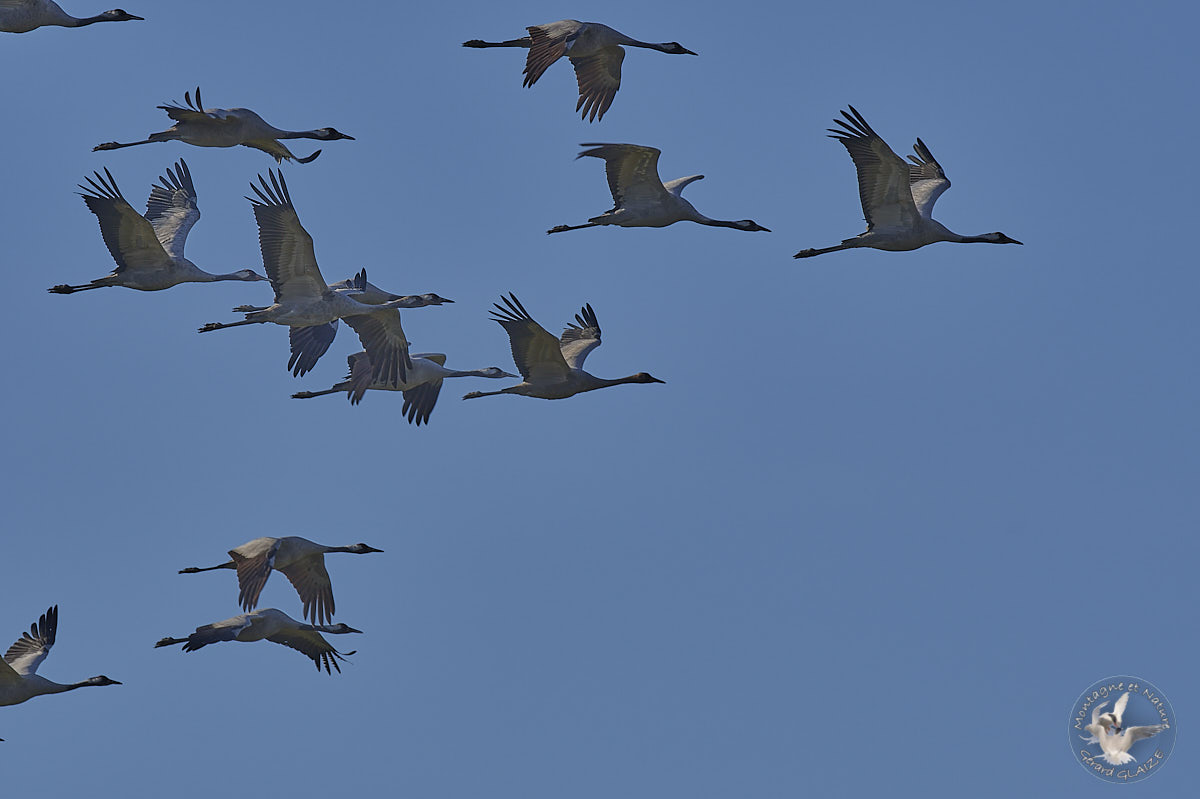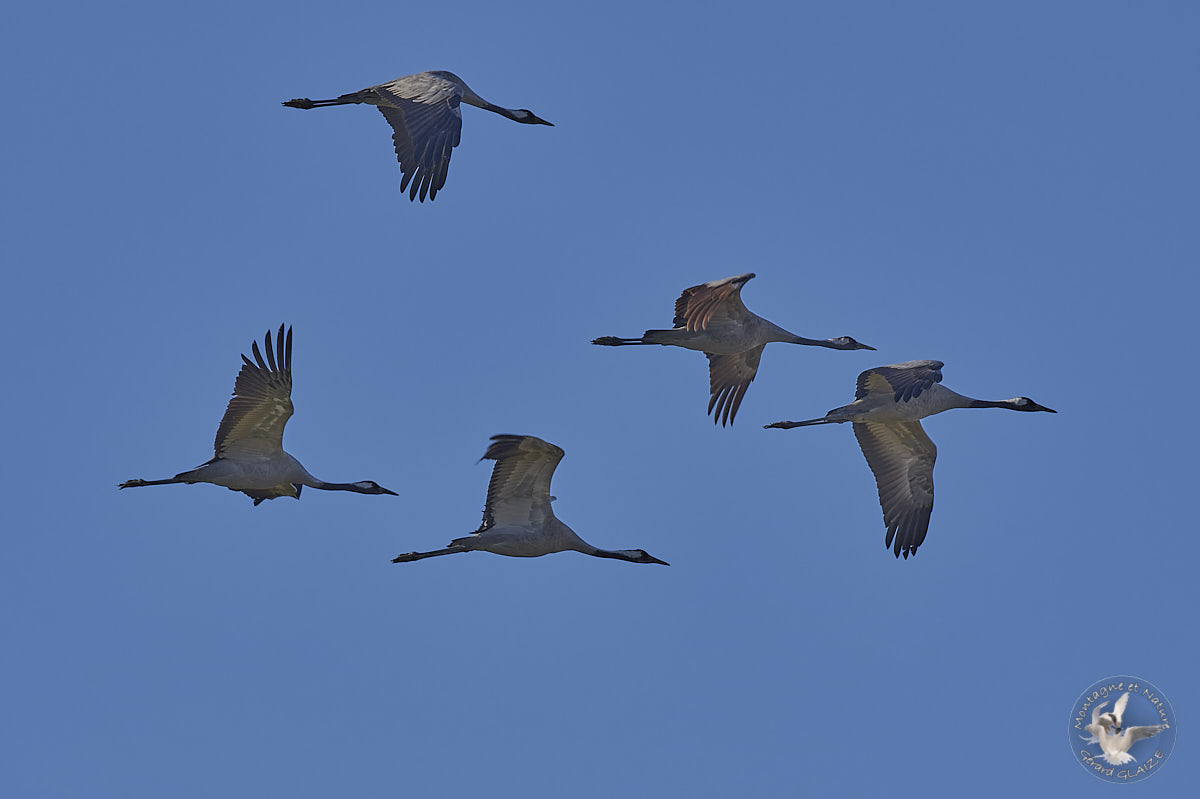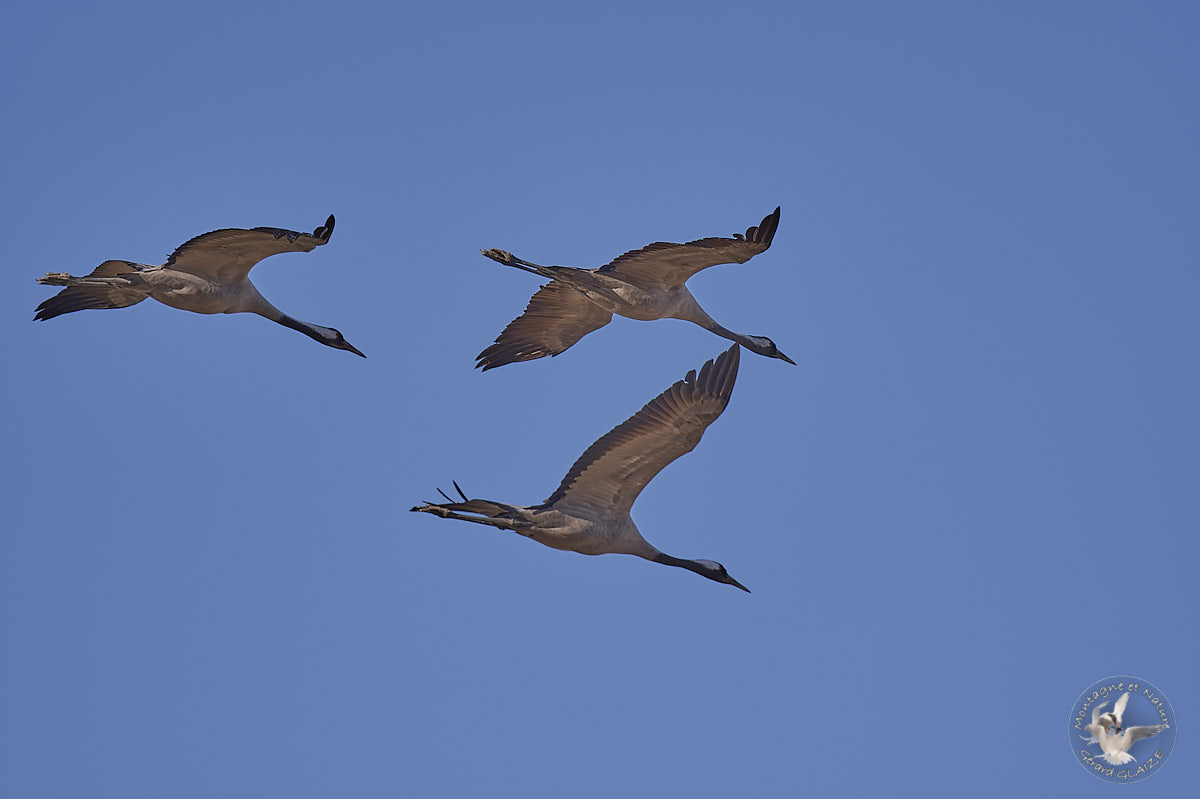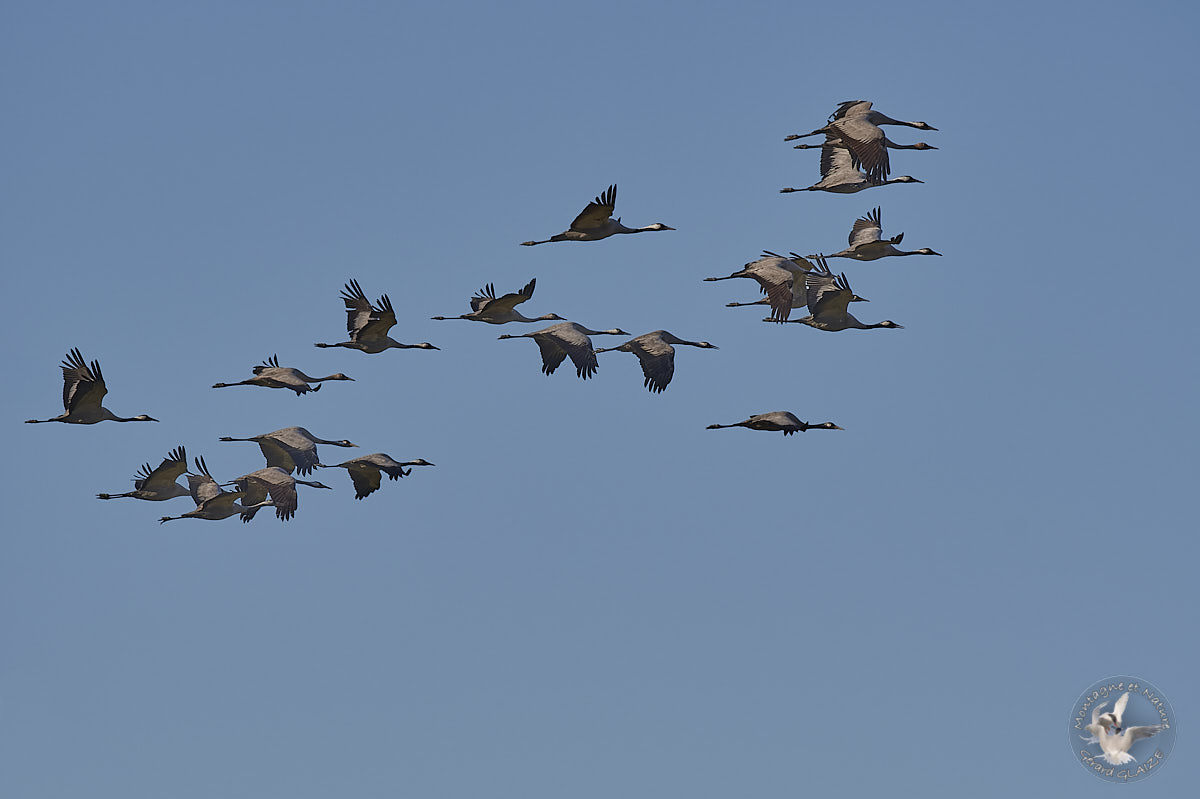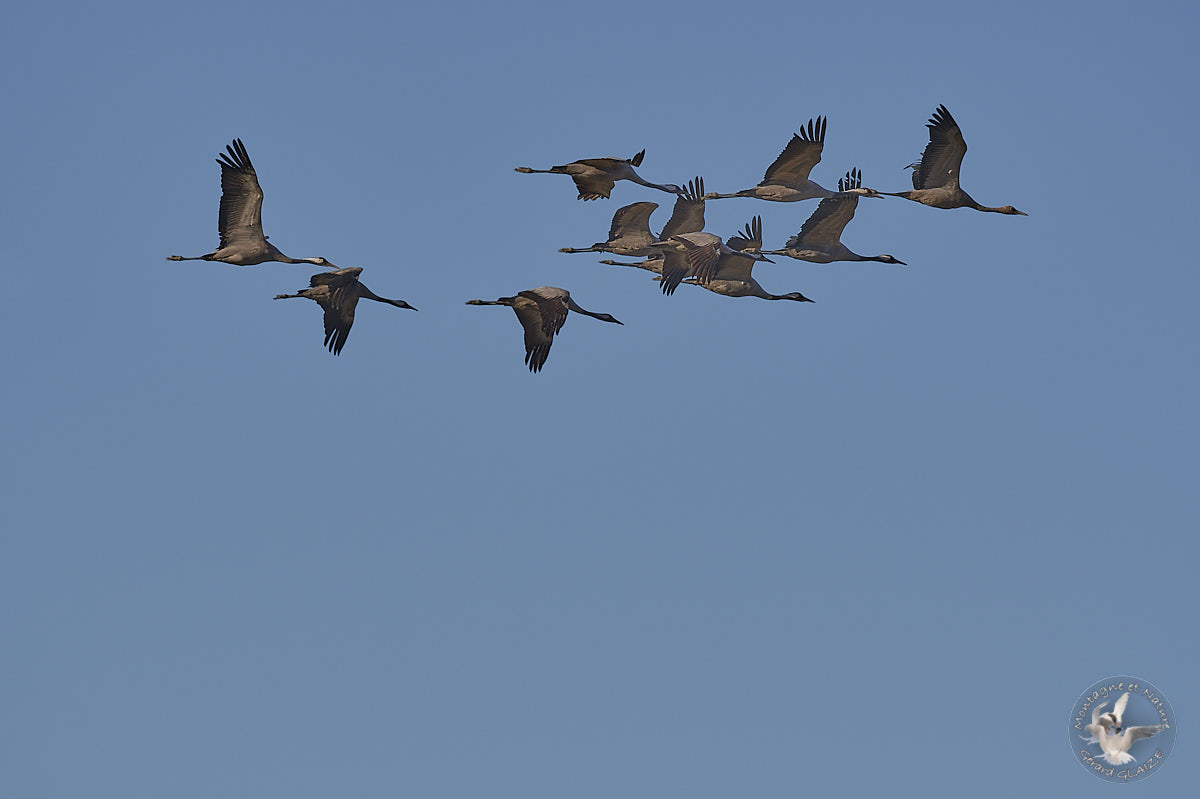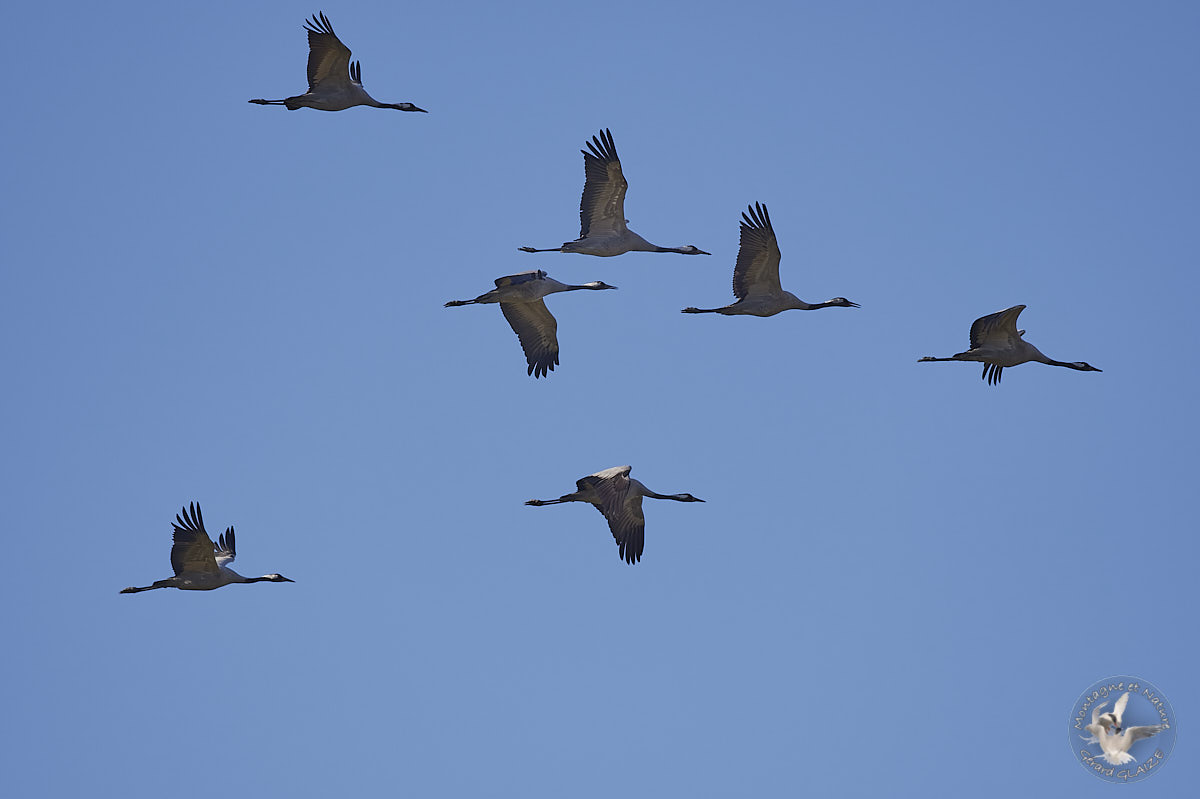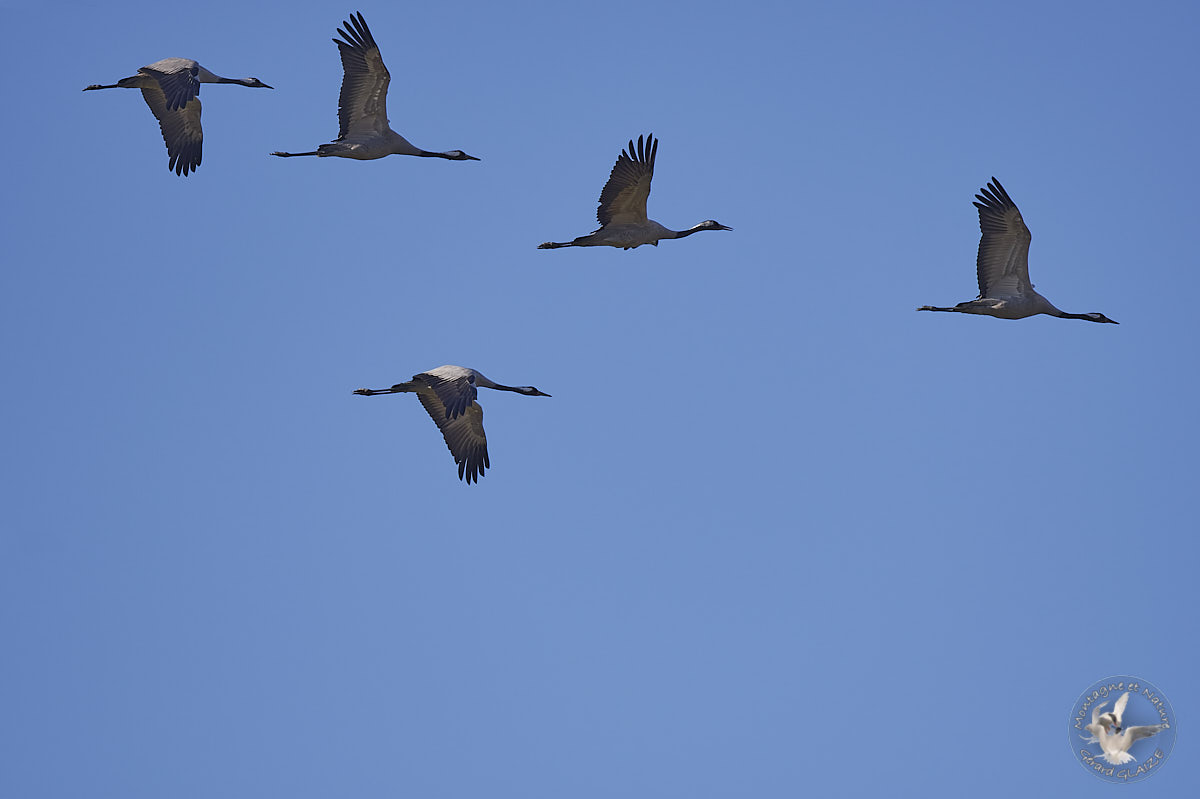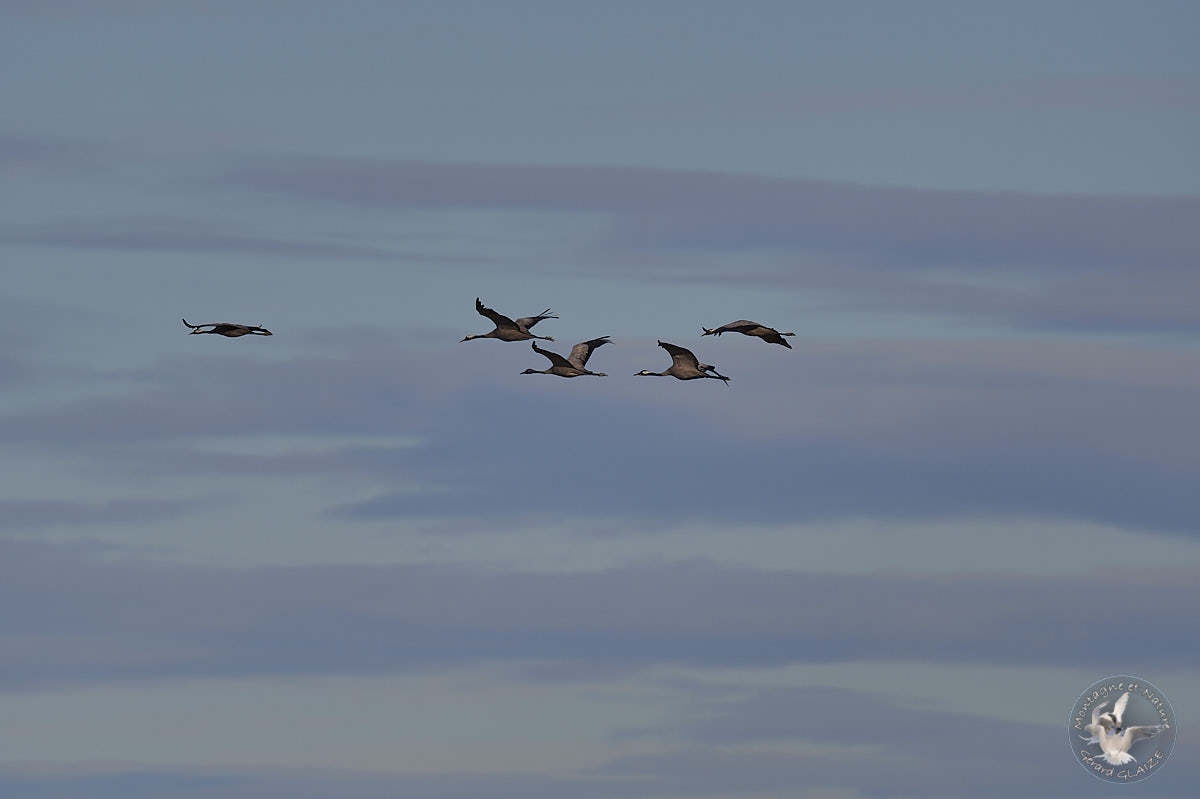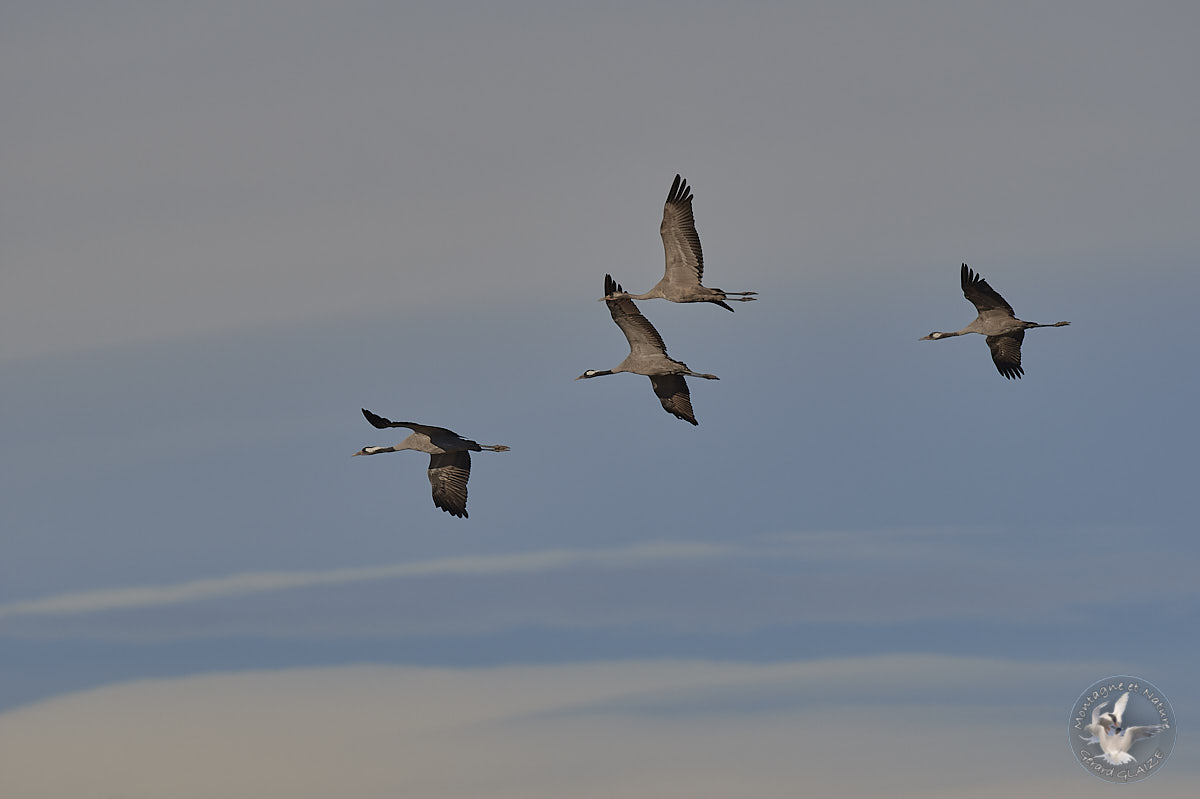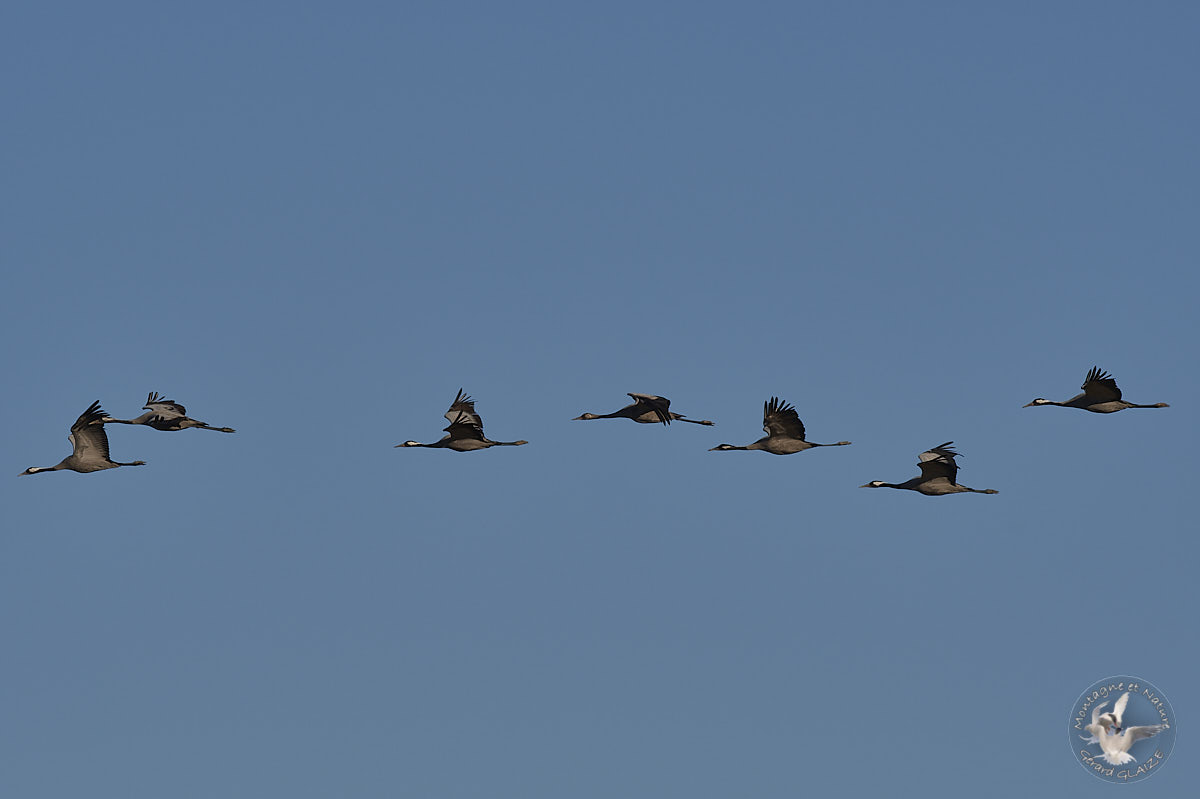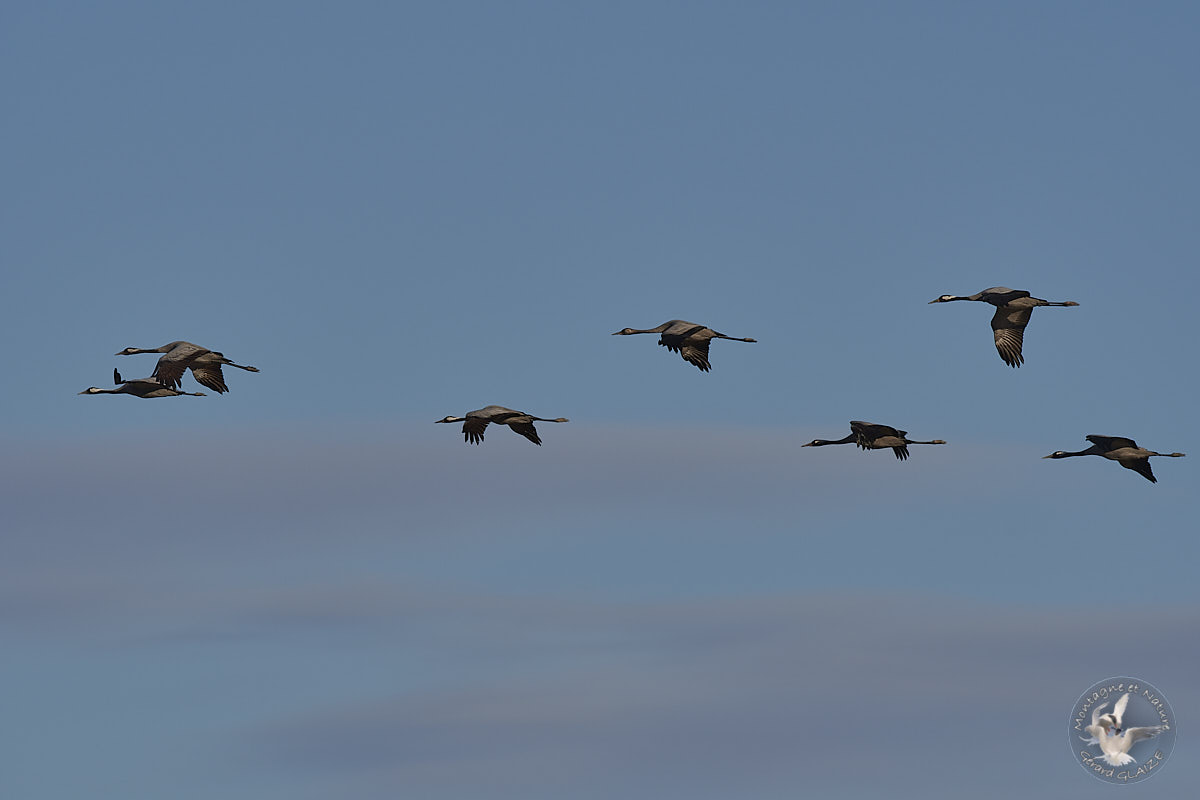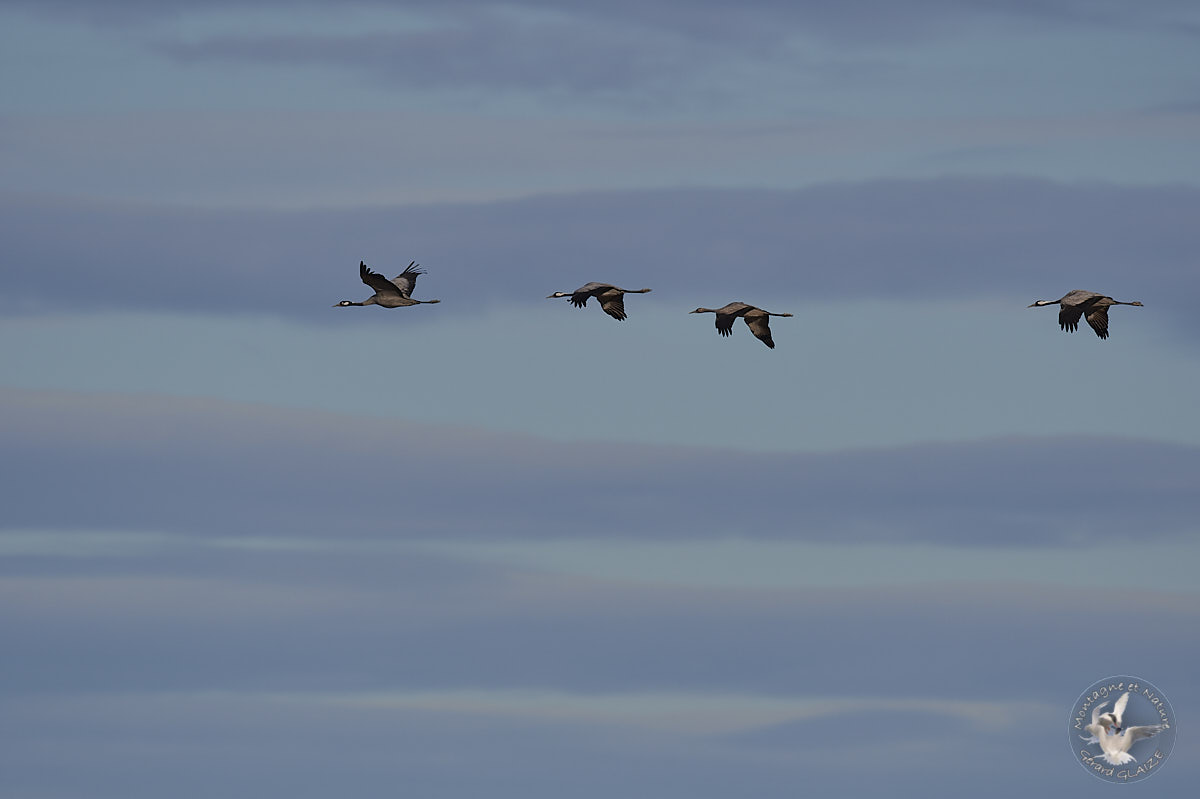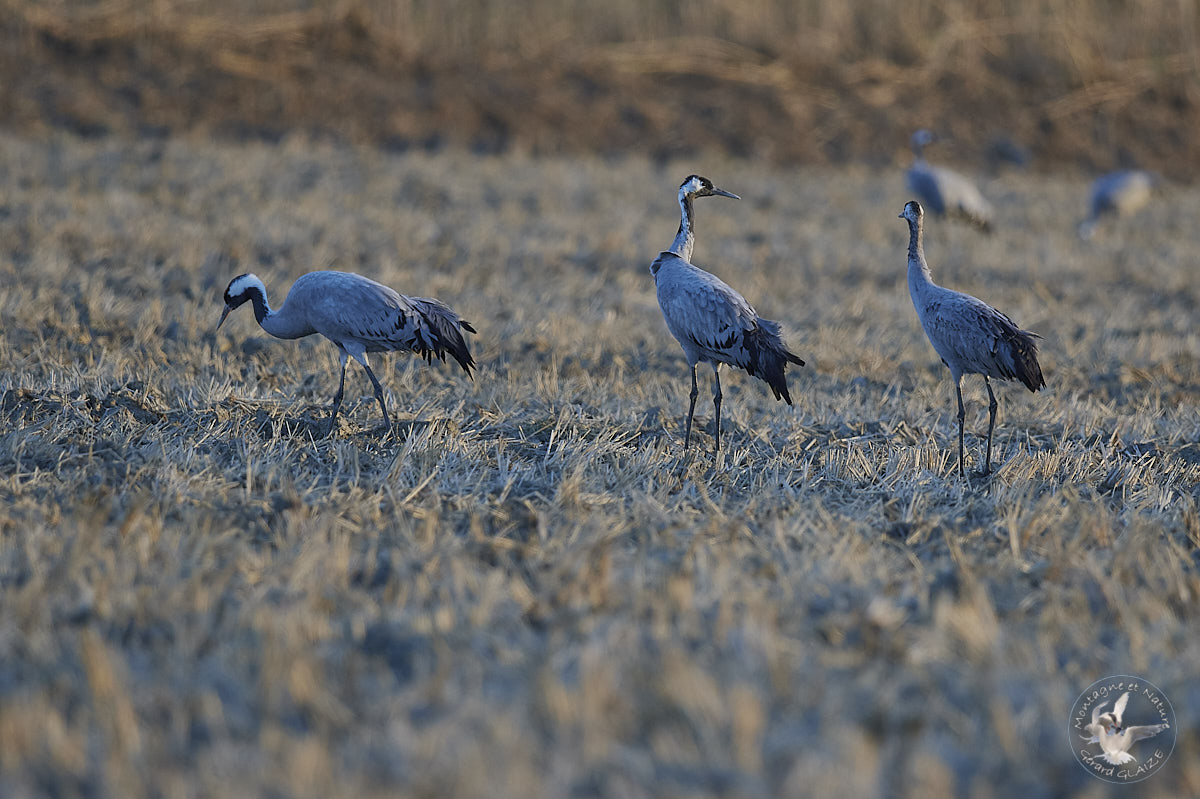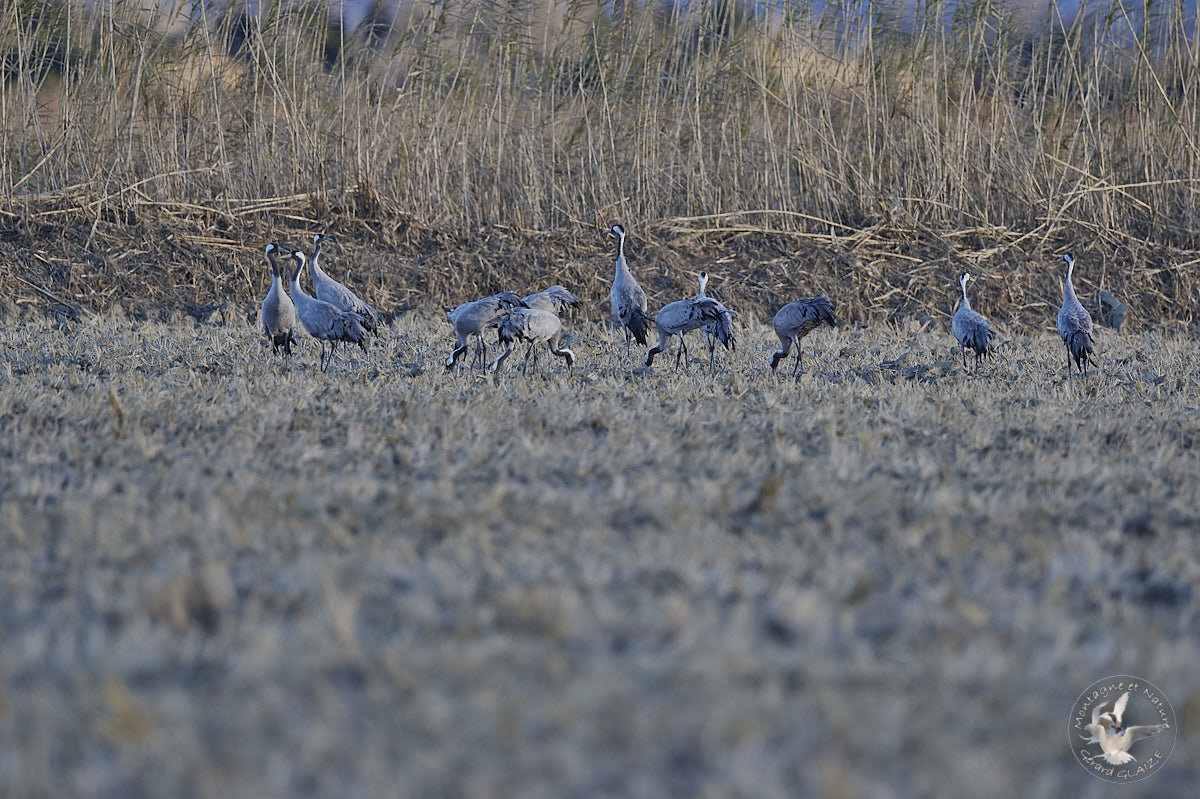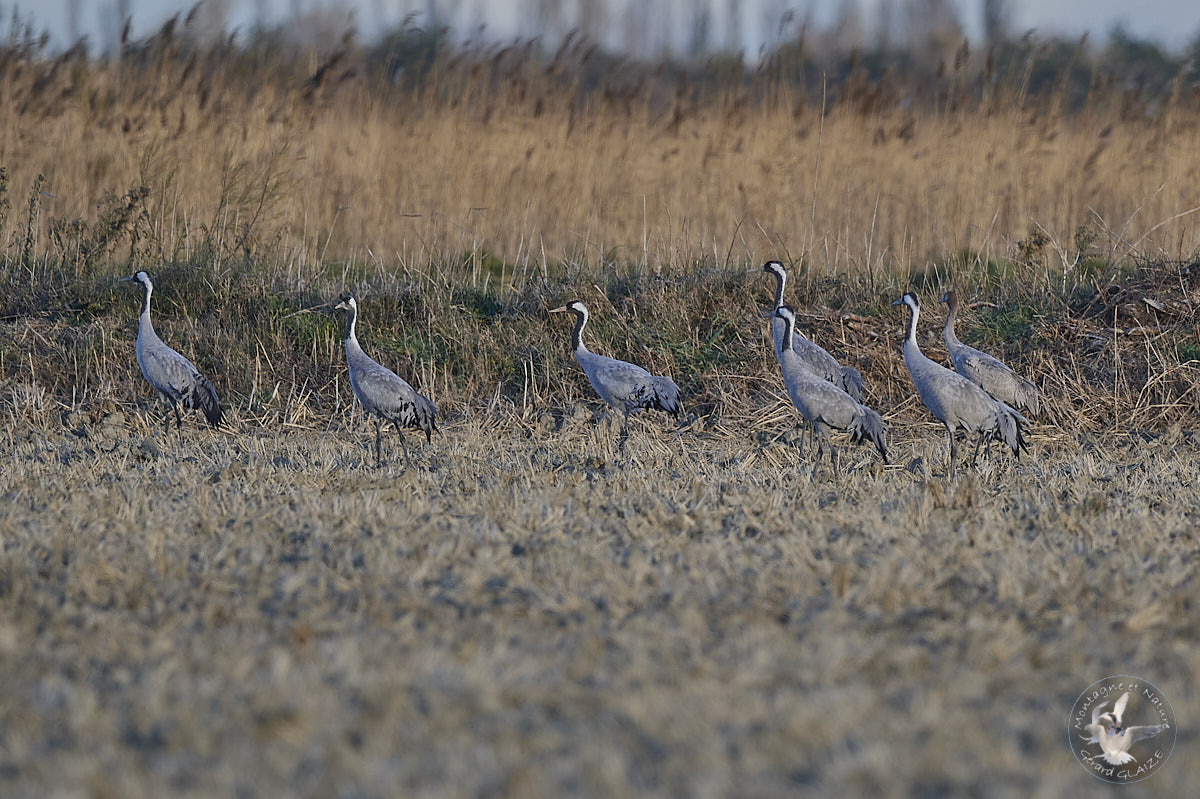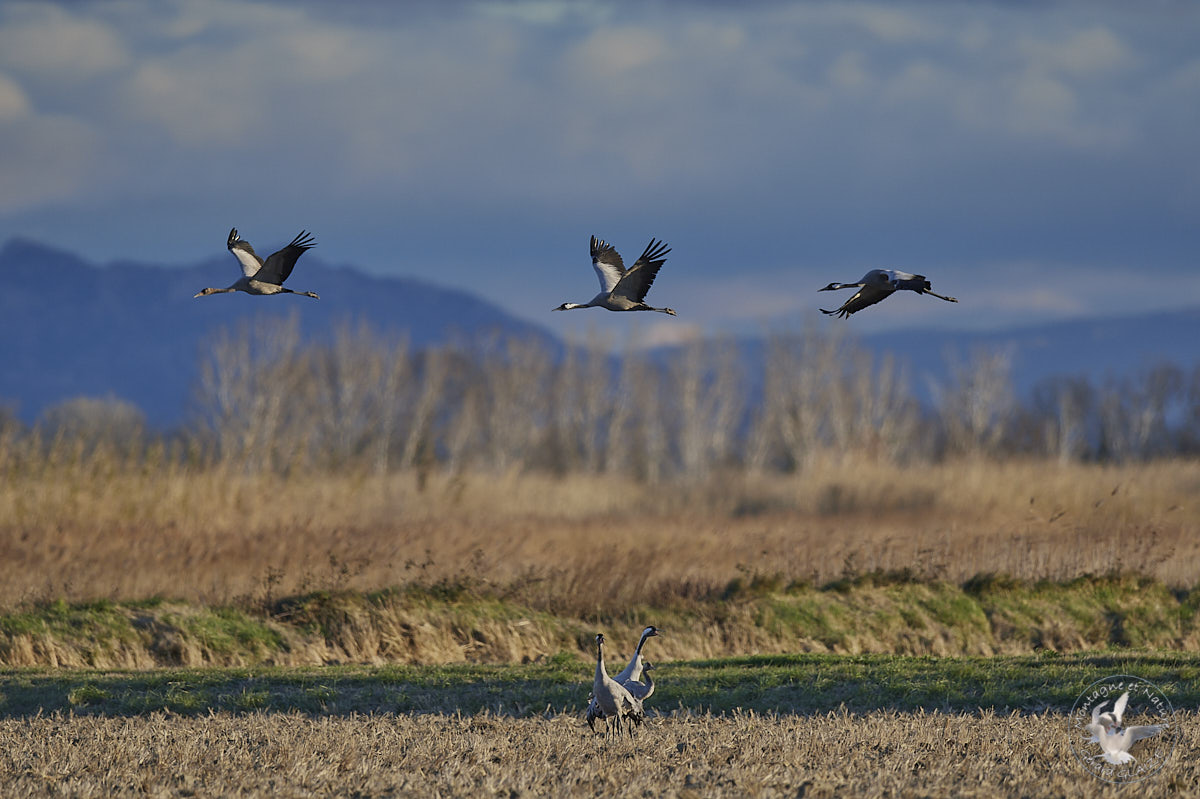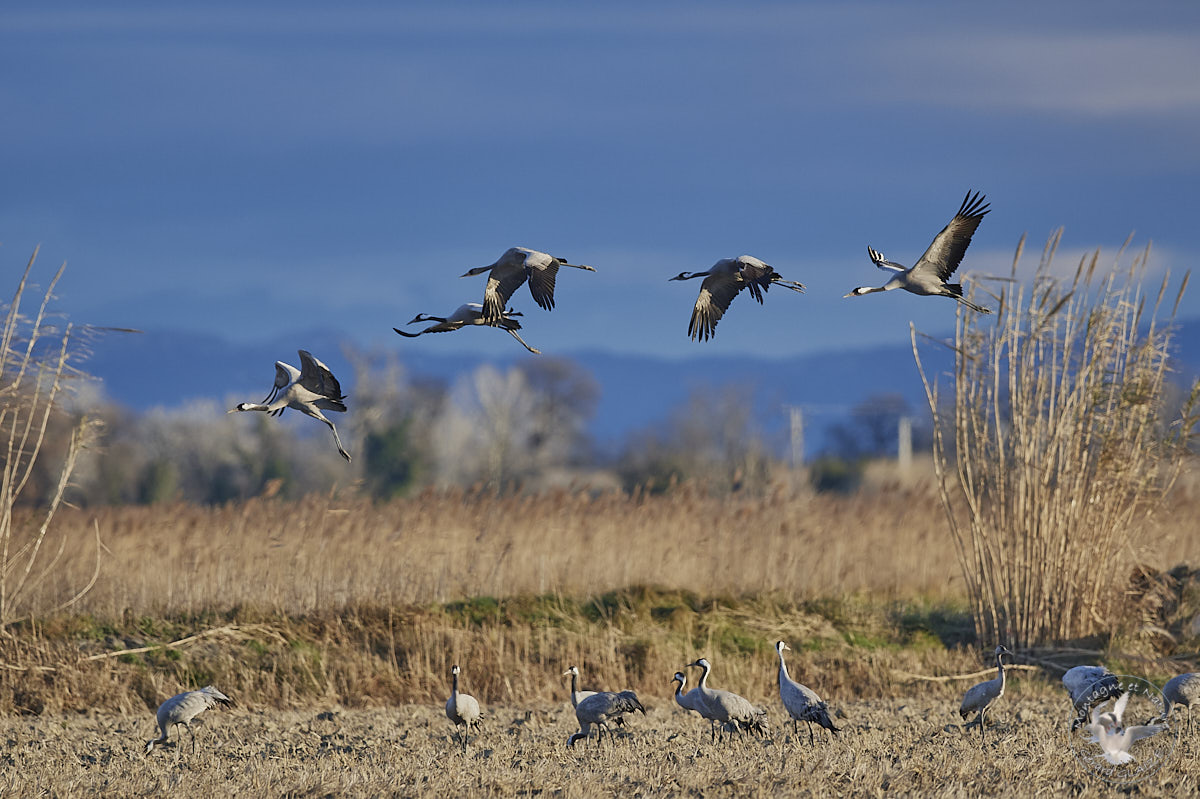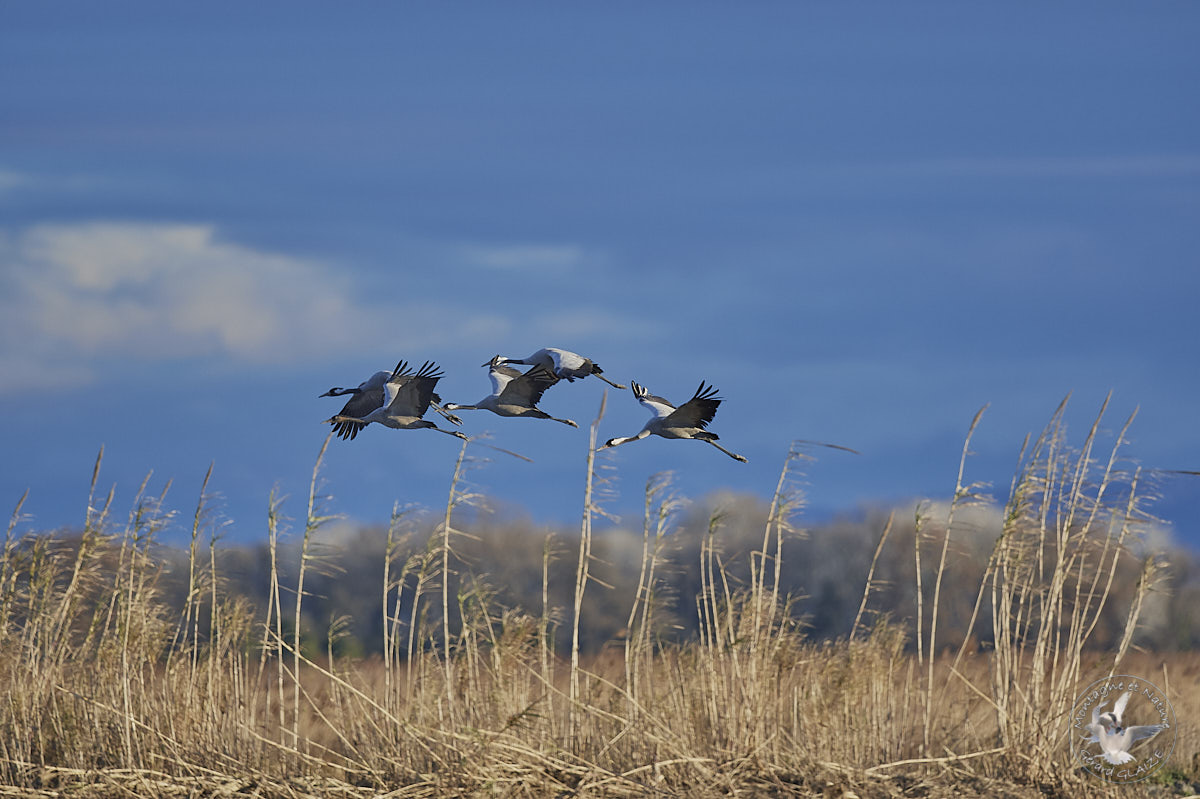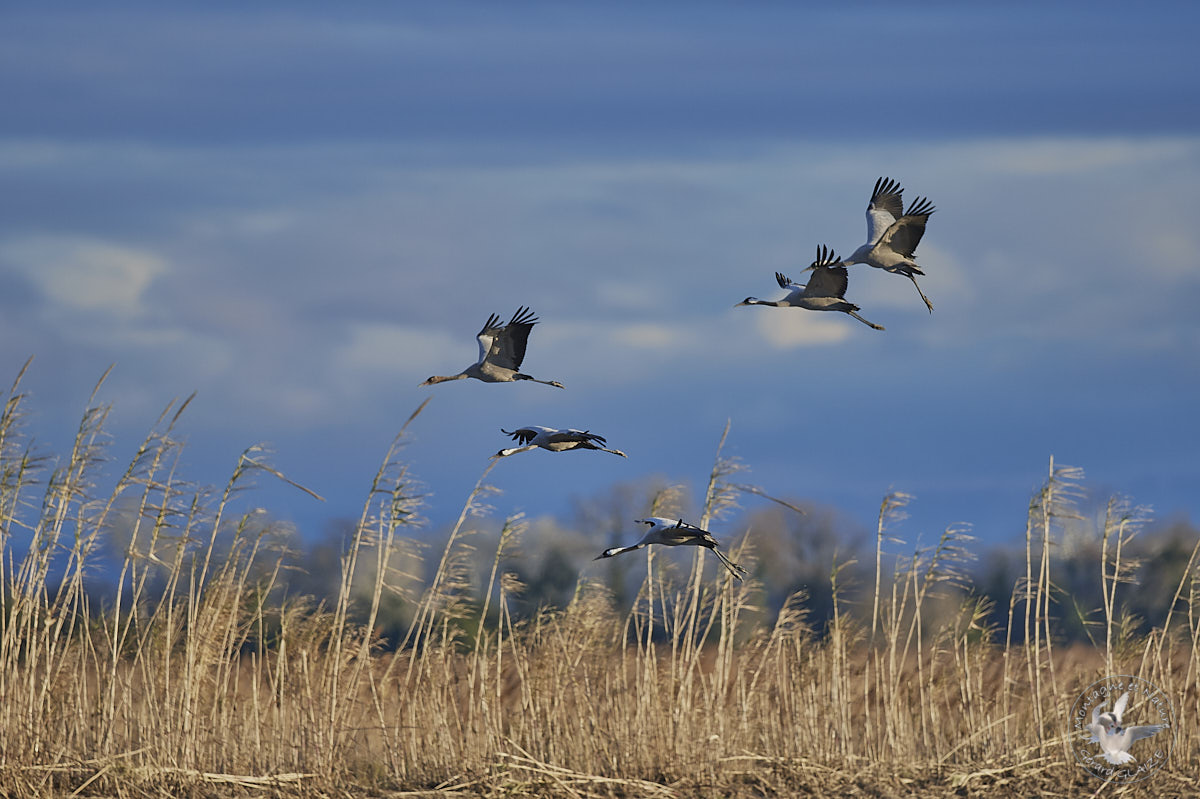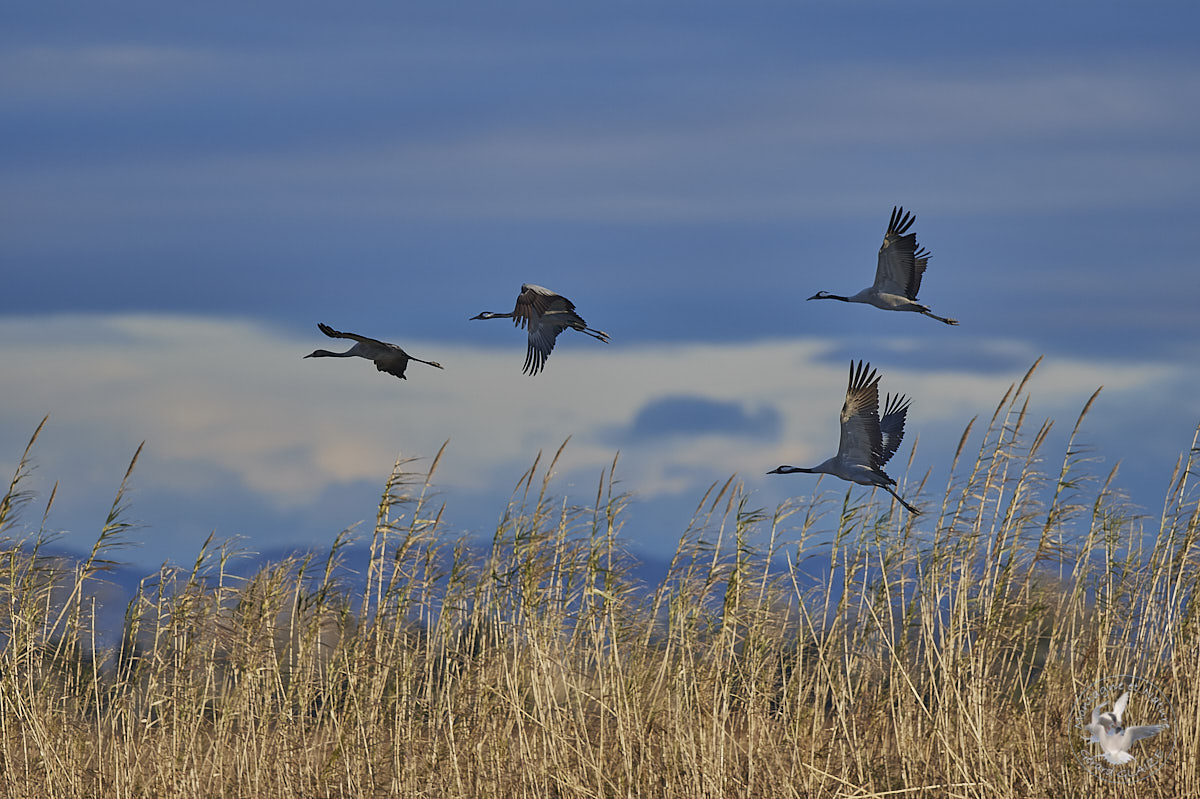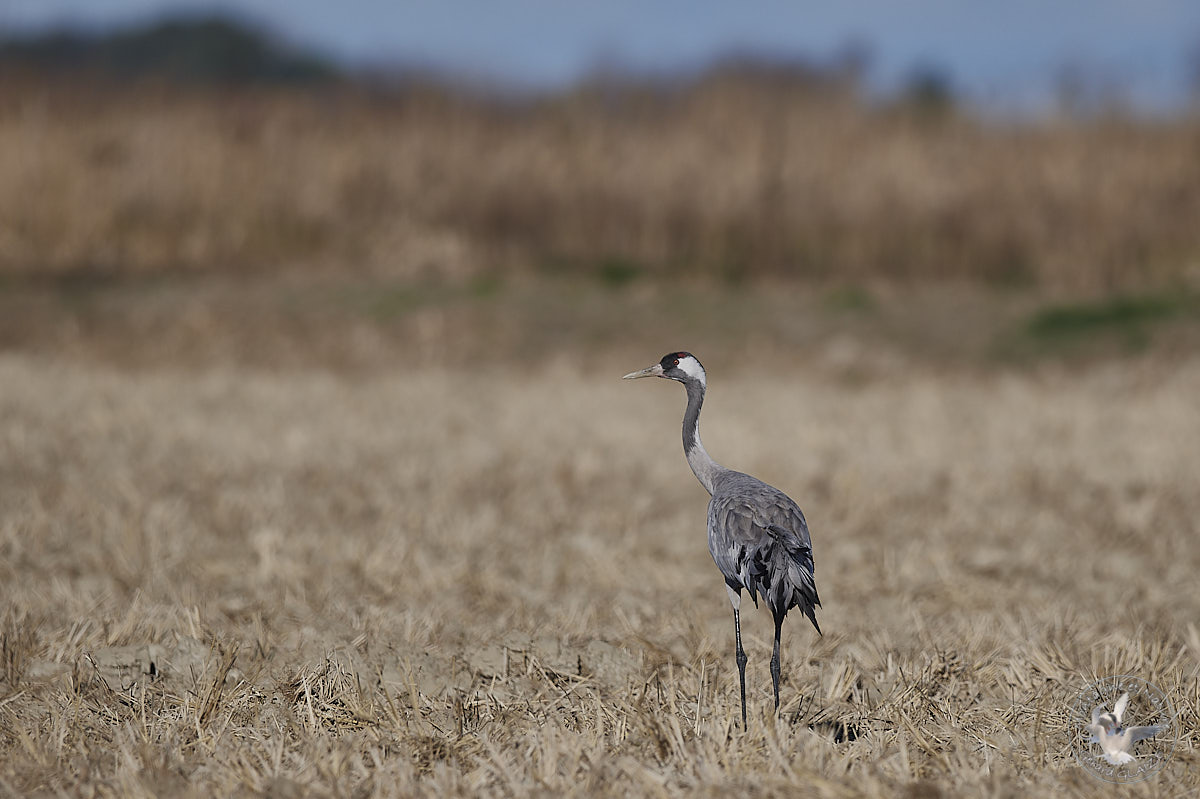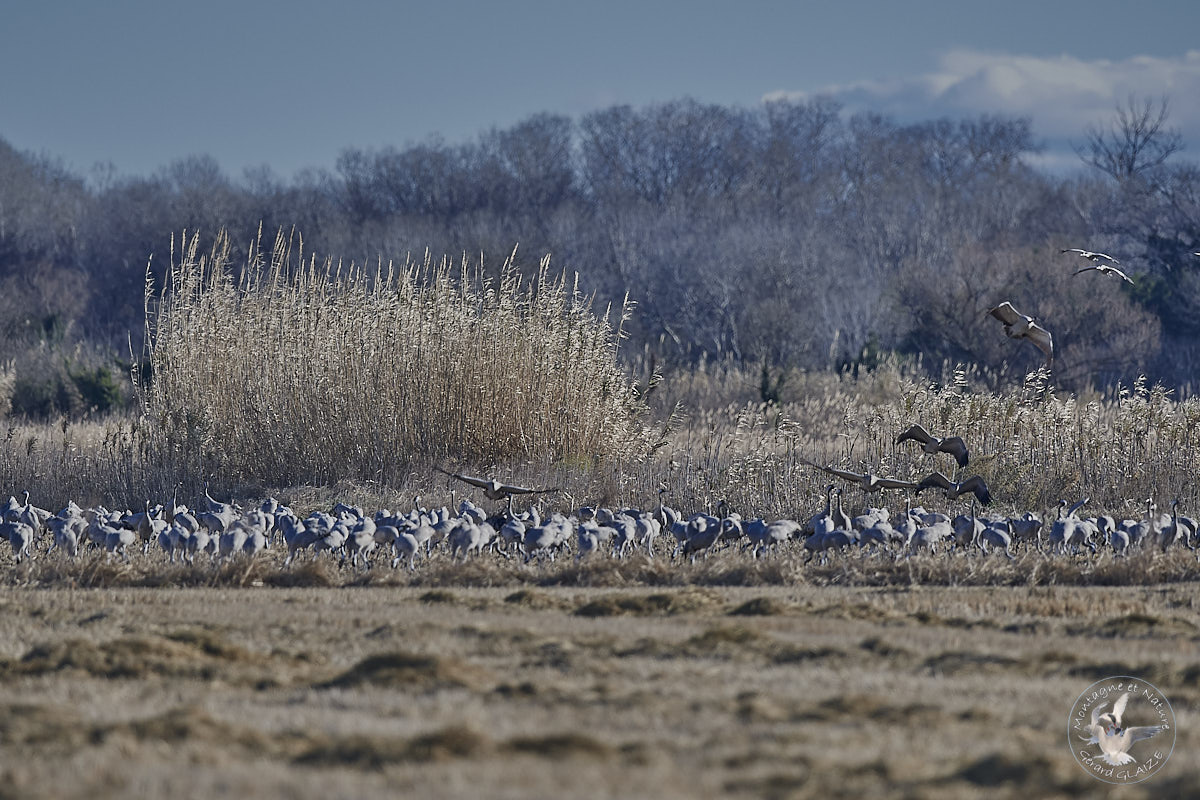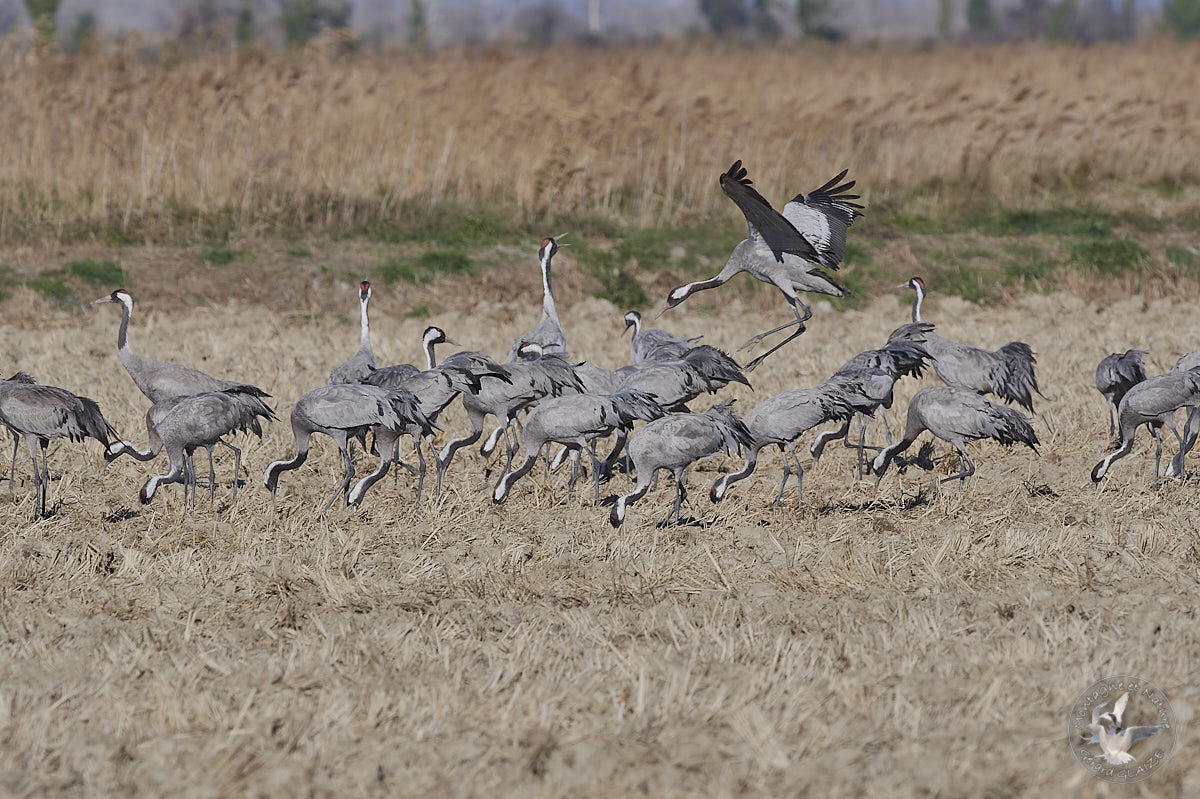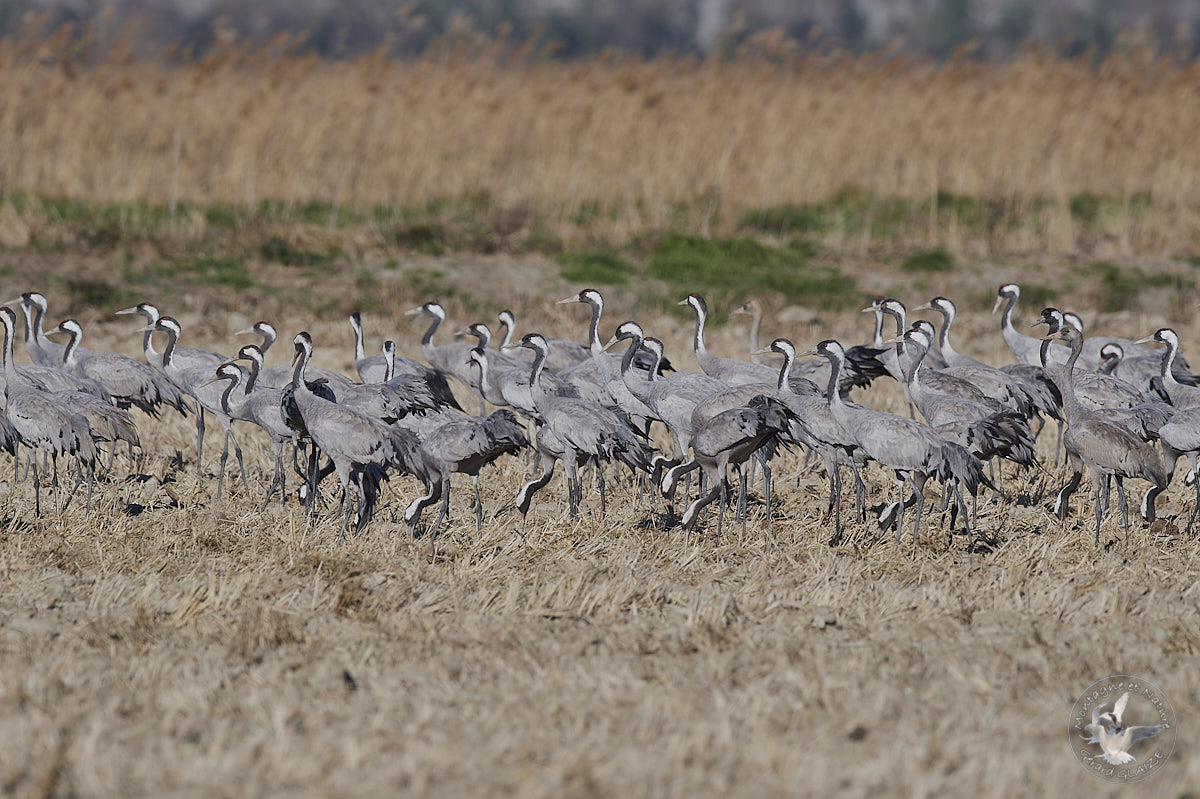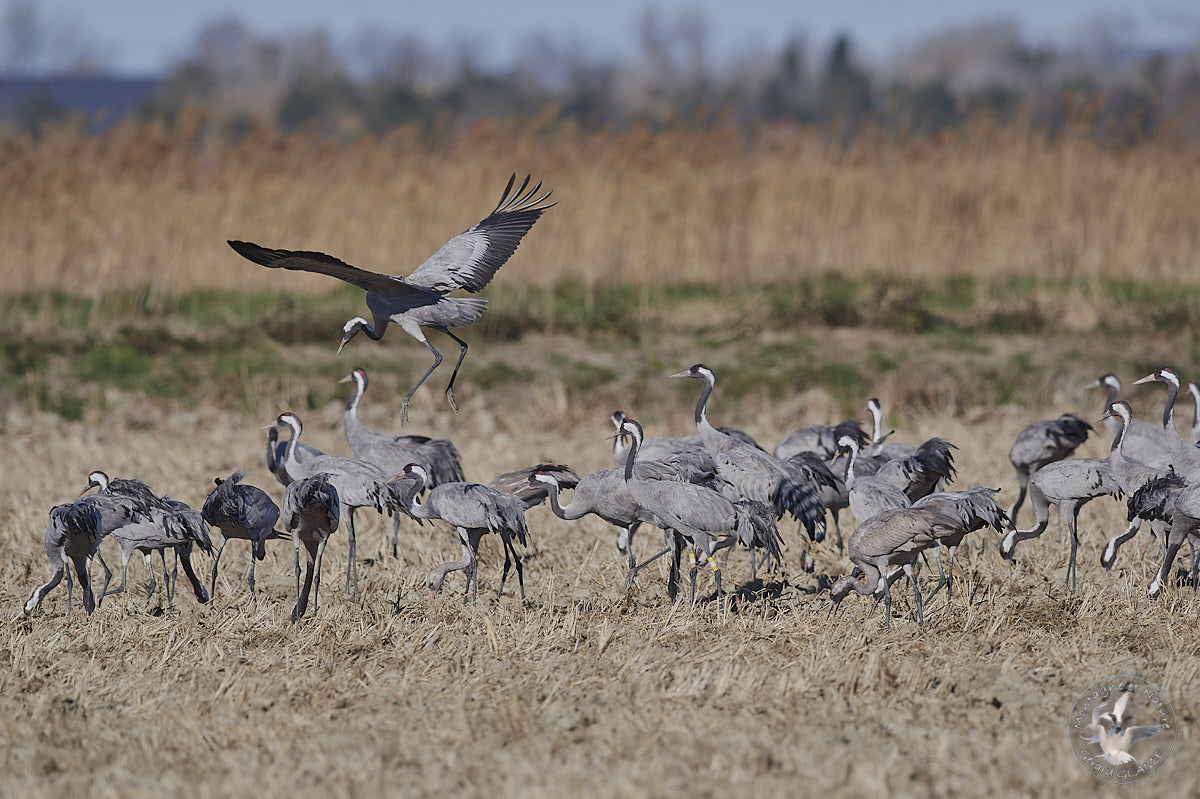The Commun Crane in Camargue
Posted on 23-01-2021
The Common Crane measures 100 to 120 cm, for a wingspan of 180 to 240 cm and a weight of 4 to 6 kg. As the name suggests, she is predominantly gray with a vertical white stripe down her neck, while a tuft of black feathers lines her tail. It wears a portion of bare red skin on the skull, hardly visible in nature.
Common cranes migrate through France from North-East to South-West, and stay mainly in Champagne (Lac du Der) and in the Landes, while others continue their migration to Spain.
The Camargue is not in their usual transit zone, however it seems that a more eastern secondary corridor between the Rhine and Rhone valleys is taken leading many Finnish, Estonian or German family groups to the Camargue. So more and more common cranes stop off in this region and stay there all winter.
The Camargue has become a wintering site of increasing importance for the species. This phenomenon observed since 2006, was particularly important in 2016. Concentrated at the beginning mainly on the Camargue gardoise, the winter occupation now concerns the whole area, sometimes overflowing the Rhône in the east to the borders of the plain of Crau.
Common cranes return to their nesting site around mid-February to early March.
In certain regions such as the moors, cranes are attracted to corn fields to feed on residues after harvesting it, in Camargue rice fields provide them with most of their food. They can be seen in large numbers in the paddy fields that were harvested at the end of the fall harvest.
We can observe important flights with a formation in V. Some ornithologists affirm that the birds are arranged thus for aerodynamic reasons. In fact, flying in this way allows common cranes to take advantage of the wake produced by the wings of the preceding bird. Like the cyclists who follow each other in a pack, their penetration into the air is thus facilitated and allows them to cover long distances.
On the other hand, common cranes are extremely shy and wary, and need large open spaces to monitor their environment and possible intruders (predators and photographer...) These are very difficult to approach, and fly away as soon as they detect an human presence.
After the flamingo, the common crane could well become the other emblem of the Camargue during the winter season.
